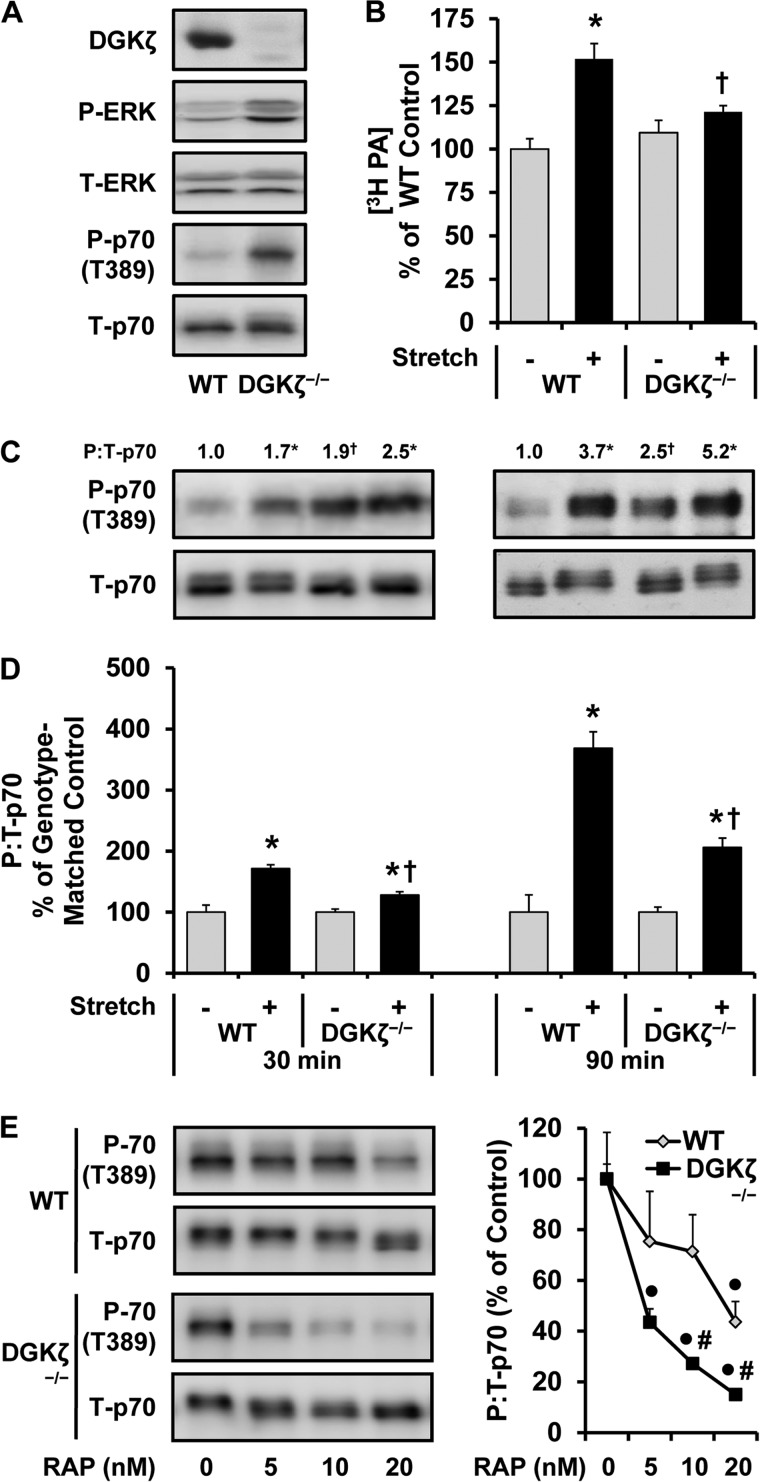FIGURE 6.
The mechanically induced increase in PA and the activation of mTOR signaling is impaired in muscles from DGKζ−/− mice. A, EDL muscles from WT and DGKζ−/− mice were collected and subjected to Western blot analysis for the indicated proteins. B--E, EDL muscles from WT and DGKζ−/− mice were held at Lo in an ex vivo organ culture system and treated as follows. B, prelabeled with [3H]myristic acid for 2 h and then subjected to 90 min of the stretch (Stretch +) or control conditions (Stretch −). The concentration of 3H-labeled PA was measured and expressed as a percentage of values obtained in WT control samples. C and D, subjected to 30 or 90 min of the stretch or control conditions followed by Western blot analysis for phosphorylated (P) and total (T) p70. The phosphorylated:total ratios of p70 were expressed relative to the values obtained in the time-matched WT control samples (C) or expressed as a percentage of the time- and genotype-matched control samples (D). E, preincubated with 5, 10, or 20 nm rapamycin (RAP) or the vehicle (RAP 0, DMSO) for 30 min and then subjected to 90 min of stretch followed by Western blot analysis for phosphorylated (P-) and total (T-) p70. The phosphorylated:total ratios of p70 were expressed as a percentage of values obtained in the genotype-matched vehicle samples. All values are presented as the mean (±S.E. in graphs, n = 3–9 per group). *, significantly different from the time- and genotype-matched control group. †, significantly different from the time- and stimulation-matched WT group. ●, significantly different from the genotype-matched vehicle group. #, significantly different from the drug-matched WT group; p ≤ 0.05.

